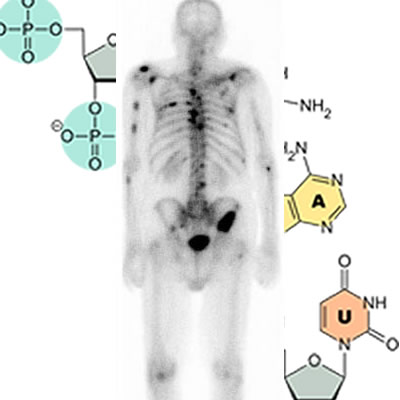
At the University of Adelaide, researchers have discovered a new pathway that regulates the way prostate cancer spreads around the body. This is important because, prostate cancer, like many other cancers, is most dangerous when the cancer has spread (metastasized).
The research team showed that a tiny RNA molecule, called miR-194, promotes the spread of cancer cells by inhibiting a protein called SOC2.
"Importantly, measuring miR-194 in a patient's blood at the time of diagnosis could become a test for the likelihood of metastasis. Patients with high levels of miR-194 in their blood could receive more aggressive treatment to reduce the chance of the cancer spreading to other parts of the body,” says project leader Dr. Luke Selth, Senior Research Fellow at the University of Adelaide.
